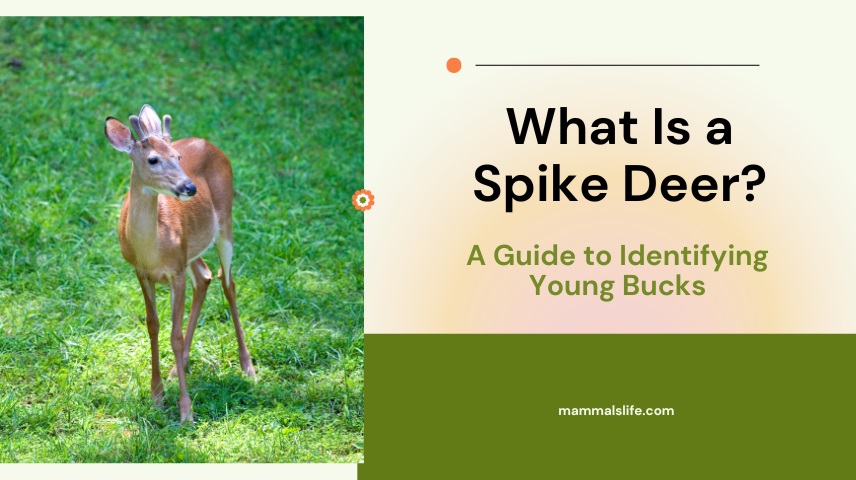Last Updated on February 22, 2025 by Mammals Life
Yes, deer feel pain like humans do. They experience physical and emotional suffering.
Understanding animal pain and suffering is crucial for ethical wildlife management. Deer, like many mammals, have nervous systems similar to humans. This similarity means they can experience pain and distress. Recognizing this helps in making humane decisions about wildlife conservation and hunting practices.
Pain perception in deer includes physical injuries, environmental stress, and emotional trauma. Addressing these issues not only promotes animal welfare but also ensures balanced ecosystems. By acknowledging deer pain, we can foster more compassionate interactions with wildlife. This approach benefits both the animals and the people who share their habitats.
Animal Pain Perception
Do animals feel pain like humans? This question fascinates many. Understanding animal pain perception helps us care for wildlife better. This section dives deep into how animals, especially deer, sense pain.
Nervous System Similarities
Animals and humans share many nervous system similarities. Both have a brain and spinal cord. These control the body’s response to stimuli. In both, nerves send signals to the brain. This process helps them react to pain.
Deer have a nervous system much like ours. Their brains process pain signals. This means they can feel pain, just like us.
Pain Receptors In Deer
Deer have pain receptors in their body. These receptors are called nociceptors. They detect harmful stimuli and send signals to the brain. These signals are what we feel as pain.
Researchers found these receptors in many parts of a deer’s body. This includes their skin, muscles, and organs. When these receptors are activated, the deer feels pain.
Here is a table showing the similarities and differences between human and deer pain receptors:
| Aspect | Humans | Deer |
|---|---|---|
| Presence of Nociceptors | Yes | Yes |
| Brain Processing | Yes | Yes |
| Response to Pain | Complex | Complex |
These similarities suggest that deer experience pain in a way much like humans. This understanding can help us treat them more humanely.
Read More – What Is the Gestation Period for Deer? A Comprehensive Guide to Deer Pregnancy
Behavioral Indicators Of Pain
Understanding how deer show pain is crucial. It helps in wildlife conservation and medical care. Deer, like humans, exhibit clear behavioral signs of pain. This section delves into these signs.
Changes In Movement
Deer often change their movement patterns when in pain. These changes can include:
- Limping or favoring one leg: Deer may avoid putting weight on an injured limb.
- Stiffness: Their movements may become rigid.
- Reduced activity: A deer in pain might rest more and move less.
Observing these changes can indicate that a deer is suffering.
Vocalizations And Expressions
Deer also communicate pain through sounds and facial expressions. Some key indicators include:
- Groans or grunts: These sounds often indicate discomfort.
- Bleating: This high-pitched sound can signal distress.
- Facial grimaces: A deer in pain might show tight facial muscles.
Listening to and watching a deer’s expressions can provide insights into their well-being.
Scientific Studies On Deer Pain
Understanding if deer feel pain like humans is crucial for wildlife management. Scientists use various methods to study this topic. These include experimental research and field observations.
Experimental Research
Researchers conduct controlled experiments to study deer pain responses. They often measure physical reactions like heart rate and cortisol levels.
| Experiment | Findings |
|---|---|
| Heart Rate Monitoring | Increased heart rate indicates stress and pain |
| Cortisol Tests | Higher cortisol levels suggest pain and discomfort |
These experiments help scientists understand deer pain on a physiological level. They provide valuable data for further research and wildlife management practices.
Field Observations
Field observations involve watching deer in their natural habitat. Researchers look for signs of pain and discomfort. These signs include limping, vocalizations, and changes in behavior.
- Limping: Indicates possible injury or pain in the limbs.
- Vocalizations: Unusual sounds can signal distress.
- Behavioral Changes: Avoidance of certain activities or areas.
Field observations provide a broader understanding of deer pain. They offer real-world insights that controlled experiments might miss.
Combining experimental research and field observations gives a complete picture. This approach helps ensure deer welfare and effective wildlife management.
Read More – What Do You Call a Deer With No Eyes? A Fun Look at Wildlife Wordplay
Ethical Considerations
Understanding whether deer feel pain like humans do raises important ethical considerations. These considerations influence policies, hunting practices, and our moral responsibilities. Let’s explore how these factors intersect with animal welfare and ethical hunting.
Animal Welfare Policies
Animal welfare policies aim to ensure humane treatment of animals. These policies often consider the pain and suffering of animals. Deer welfare is no exception. Governments and organizations develop regulations to minimize animal suffering. These include guidelines on hunting methods and animal care.
For instance, many regions have laws against using certain traps. These traps can cause prolonged suffering. Policies also mandate quick and humane methods for hunting. By understanding deer pain, we can improve these regulations. This leads to more ethical treatment of animals.
Impact On Hunting Practices
The knowledge that deer feel pain like humans impacts hunting practices. Hunters need to adopt more humane methods. This not only reduces animal suffering but also ensures ethical hunting.
Here are some ethical hunting practices:
- Using quick and efficient hunting methods
- Avoiding hunting during certain seasons to protect young animals
- Ensuring accurate shots to minimize suffering
These practices align with animal welfare policies. They also reflect a respect for the animal’s life. Ethical hunters often follow these guidelines to maintain balance in nature.
Pain Management In Wildlife
Wild animals, including deer, experience pain just like humans. Their pain often goes unnoticed because they hide it to avoid predators. Understanding how to manage pain in wildlife can help improve their quality of life.
Medical Interventions
Veterinarians sometimes use medical interventions to treat injured wildlife. These interventions can include:
- Painkillers: These drugs help reduce pain in injured deer.
- Anti-inflammatory drugs: These reduce swelling and pain.
- Surgery: Sometimes, surgery is needed to fix broken bones or wounds.
Veterinarians choose the safest and most effective treatments. They aim to minimize stress and pain for the animals.
Natural Remedies
In some cases, natural remedies can help manage pain in wildlife. These remedies might include:
- Herbal treatments: Some plants have natural pain-relieving properties.
- Rest and recovery: Giving animals time to heal in a safe environment.
- Proper diet: A nutritious diet can support healing and reduce pain.
Natural remedies are often less invasive and can be very effective. They can complement medical treatments for a holistic approach to pain management.
| Intervention Type | Example | Benefit |
|---|---|---|
| Medical | Painkillers | Quick pain relief |
| Medical | Anti-inflammatory drugs | Reduces swelling |
| Natural | Herbal treatments | Less invasive |
| Natural | Rest | Supports natural healing |
Read More – How Old Do Whitetail Deer Live? Factors That Influence Their Longevity
Comparing Human And Animal Pain
Understanding if deer feel pain like humans is important. Pain helps animals survive, but how similar is it to human pain? Let’s explore this by comparing neurological differences and emotional responses between humans and animals.
Neurological Differences
The human brain has a complex structure. It helps us feel and react to pain. Deer also have brains that process pain. But their brains are different from humans. Here are some key differences:
- Humans have a larger cerebral cortex.
- Deer have simpler brain structures.
- Humans process pain through more pathways.
- Deer rely on instinctive responses.
These differences affect how pain is felt and managed. Humans can describe and understand pain better. Deer might react quickly to avoid danger.
Emotional Responses
Humans have strong emotional reactions to pain. We can feel sadness, fear, and anxiety. Deer also experience emotions, but differently:
| Humans | Deer |
|---|---|
| Complex emotions | Basic emotions |
| Can express feelings | React instinctively |
| Understand long-term pain | Focus on immediate danger |
Humans might feel emotional pain for a long time. Deer deals with pain quickly and move on. Their survival depends on swift reactions.
Frequently Asked Questions
Do Deer Feel Pain Like We Do?
Yes, deer feel pain like humans. They have a nervous system that responds to injuries and harmful stimuli.
What Animal Has The Highest Pain Tolerance?
The animal with the highest pain tolerance is the African elephant, known for its resilience to injuries and pain.
Which Animal Does Not Feel Pain?
Certain animals like the naked mole-rat and some invertebrates, such as jellyfish, do not feel pain in the same way humans do.
Is Animal Pain Worse Than Human Pain?
Determining if animal pain is worse than human pain is complex. Animals feel pain differently due to varied nervous systems.
Do Deer Experience Pain Like Humans?
Yes, deer have nervous systems similar to humans, which means they can feel pain and discomfort.
Conclusion
Understanding deer pain helps us empathize with wildlife. Recognizing their suffering can lead to better conservation efforts. Treat animals with compassion and respect. Awareness of animal pain bridges the gap between humans and wildlife. Let’s prioritize humane treatment for all living beings.











